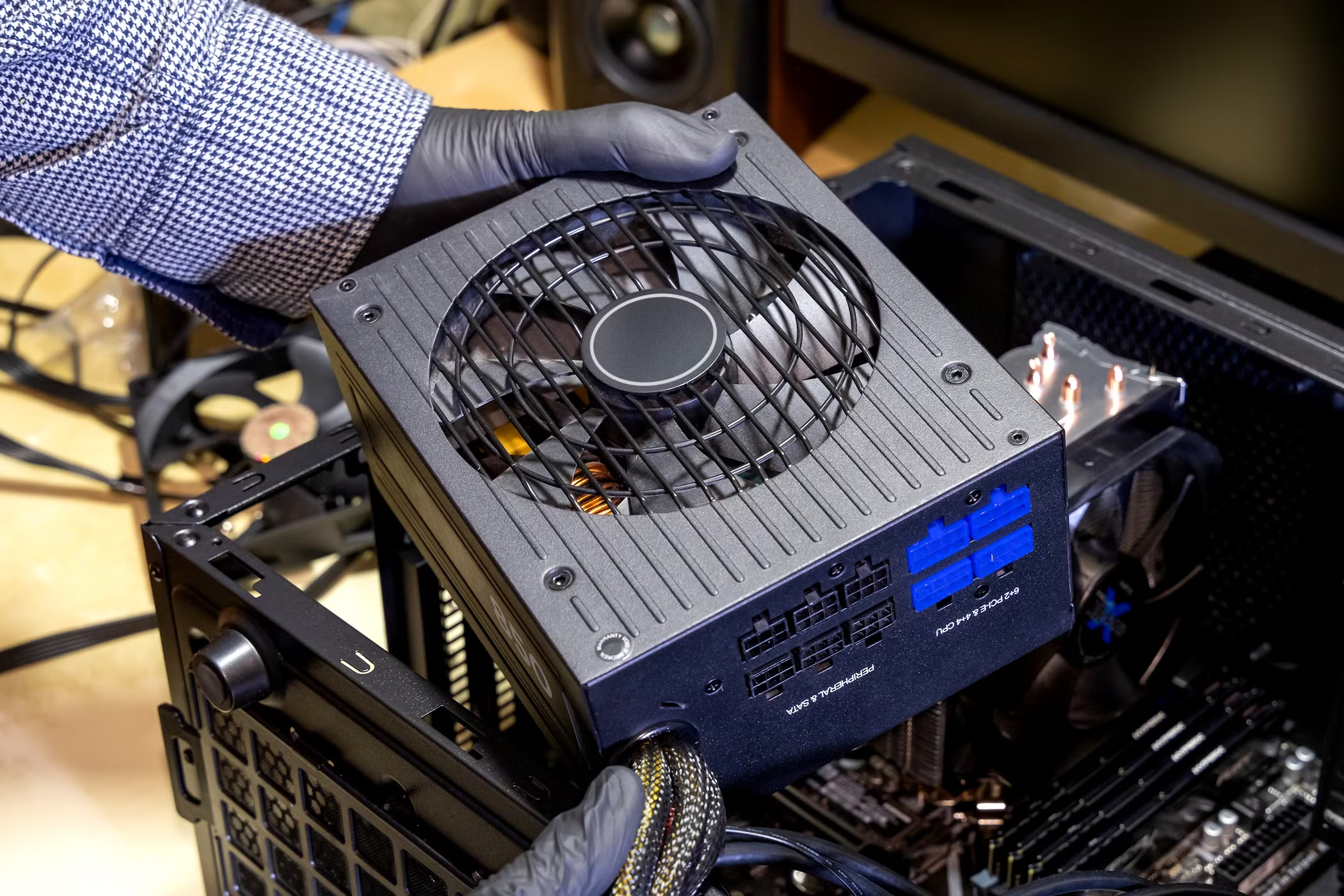The Cables in Your PC’s Power Supply, Explained
So, you’re building a new gaming PC. For a newbie, this can be a daunting task. After all, it has a lot of components, and if you don’t know what you’re doing, you can mess things up. As such, it’s important to be familiar with all the components inside a PC, how they work, and what goes where.
For example: the power supply you just opened up and the mess of cables coming out of it. What are these PSU cables and connectors, and what do they do?
20/24-pin motherboard cable
First of all, the cable that probably caught your attention the most is the wide 24-pin one, whether you bought a modular or non-modular PSU. And it’s actually the most important cable.
This cable is the main connector that provides power to your PC’s motherboard. While this isn’t the only connector your PC needs (as you’ll soon see, other components will require additional power), it is primarily responsible for delivering the correct voltage to your motherboard and, by extension, most of your PC’s components. This includes your RAM, storage devices, PCIe devices without auxiliary power, and nearly everything else on your motherboard.
You’ll usually find this connector sitting prominently on the edge of your motherboard. In older ATX motherboards, as well as lower-end motherboards, you’ll find that the main connector actually has 20 pins instead of 24. Similarly, some power supplies come with a 20+4 connector (with 4 pins that can be detached) instead of a straight 24-pin. This is because older PCs with lower power requirements can work with 20 pins instead of 24, and power supplies have remained roughly the same for the past several years (and not for lack of trying).
The power supply is more or less compatible with older power supplies thanks to the ATX standard, and that’s something that’s stuck in the minds of some PSU manufacturers. After all, old power supplies eventually die, and when they do, the ability to use a new power supply might just save it from going to a landfill.
4/8-Pin CPU Connector
Then, we have the CPU connector. The CPU is one of the few parts of your PC that requires auxiliary power in addition to the power your motherboard provides. The CPU connector comes into play.
The CPU connector is usually found near your PC’s CPU socket. Simply plug it in once you’re done with the motherboard connector, and you’re good to go.
Depending on the computer, you might find this connector slightly different. In lower-end PCs, you’ll find a 4-pin connector on your motherboard, which should be able to provide enough power for these lower-end chips. On mid-range and high-end CPUs, you can find 8-pin instead, which gives nearly every chip enough power.
Almost always, your PC’s power supply will include an 8-pin connector that breaks into two parts, known as 4+4-pin. This allows it to connect to both a 4-pin and an 8-pin connector – just set one of them aside if you don’t need to use it.
On some power supplies, you may find more than one CPU cable. Similarly, some motherboards may include 8-pin and 4-pin connectors or come with 12-pin instead. Although it’s not common, some PCs require a lot more juice for the CPU, especially for those who are into overclocking.
6/8-pin PCI Express cable (GPU cable)
Technically, all PCI Express power needs are already met by the motherboard connector. After all, if you put something like a Wi-Fi card in there, it will work perfectly. However, some devices (usually GPUs) require additional auxiliary power beyond what the motherboard provides. This is where PCIe cables come in. These are sometimes called GPU cables because they are primarily used by the GPU.
These come in both 6-pin and 8-pin flavors and connect on top of the GPU. Depending on the GPU we’re talking about, you may have to make do with a single connector, or you may need two or three connectors, depending on the power requirements of the specific card. If the card’s power requirements are not fully satisfied, users may experience performance degradation or instability and frequent crashes. Fortunately, most power supplies, especially those with higher wattage capacities, come with multiple PSU cables.
In addition to the traditional 6/8-pin PCIE cable, you may also find newer 12VHPWR or 12V-2×6 GPU cables used in modern GPUs, such as Nvidia’s RTX 40 series lineup.
12/16-Pin GPU Cable (12VHPWR)
The 12VHPWR (12-volt high-power) connector was introduced with the launch of PCIe 5.0 and Nvidia’s RTX 40-series GPUs. This connector supplies up to 600W of power through a single cable, eliminating the need for multiple 8-pin connectors in high-end GPUs. The connector has 12 large pins that handle power and four smaller data pins. These data pins allow the power supply to communicate with the GPU, adjusting power delivery based on demand.
